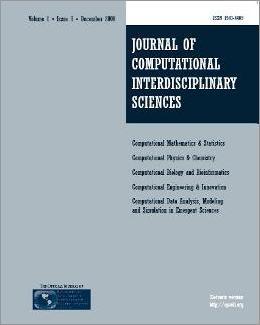
Editorial Office:
Management:
R. S. Oyarzabal
Technical Support:
D. H. Diaz
M. A. Gomez
W. Abrahão
G. Oliveira
Publisher by Knobook Pub


Editorial Office:
Management:
R. S. Oyarzabal
Technical Support:
D. H. Diaz
M. A. Gomez
W. Abrahão
G. Oliveira
Publisher by Knobook Pub
doi: 10.6062/jcis.2015.06.03.0098
(Free PDF)Orlando J. Katime Santrich, Carlos J. Barrios Hernández and Hugo H. Andrade Sosa
System dynamics is a methodology to model and simulate complexity in science and engineering. In this approach there are limited mathematical descriptions due to a large time in the behavior and a nonmathematical definition of the relationships between variables of the phenomena. It proposes causality and feedbacks to explain relationships between components. In spite that there are many examples of complex systems in Astrophysics, the uses of System Dynamics in this area are not documented. However, we used this methodology to develop models of the stellar nucleosynthesis on the main sequence and galactic evolution to exploit the possibility to treat important aspects as complexity, scale factors, unknown elements and known variables in the same context. For nucleosynthesis reactions, feedback loops keep the solar-type stars on the main sequence and production of chemical elements. The galactic evolution model has two feedback loops connected through density of molecular gas, generating the dynamic of stellar formation. Our results for energy emission rate, nuclear luminosity and central and effective temperatures for a solar-type star are similar to those found in the literature. As well as the qualitative behavior of the stellar mass, molecular gas density and intergalactic gas density for the galactic evolution model. Therefore we concluded that System Dynamics is a powerful tool for modelling complex phenomena with feedback in Astrophysics.
system dynamics, stellar nucleosynthesis, galactic evolution;, computational astrophysics.
[1] Ade, P., Aghanim, N., Armitage-Caplan, C., Arnaud, M., et al. Planck 2013 results. XVI. Cosmological parameters. DOI:10.1051/0004-6361/201321591.
[2] Andrade, H., Ramirez, A., Ulloa, A. & Ulloa, S. System Dynamics applied to Analysis Modeling and Simulation of Chain Growth Polymerization Process, International conference on System Dynamics, System Dynamics Society, 12th, Stirling, Codfish (1994).
[3] Andrade, H. Sotaquirá, R., Dynner, I., Espinoza, A. & Lopez, H. Pensamiento Sistémico: Diversidad en Busqueda de Unidad, Ediciones UIS, Bucaramanga/Colombia, (2001).
[4] Bisnovatyi-Kogan, G.S. Stellar Physics 2: Stellar Evolution and Stability, Springer, Berlin/Germany,(2010).
[5] Catelan, M. Structure and Evolution of Low-Mass Stars: An Overview and Some Open Problems, AIP Conference Proceedings, Volume 930, pages 39-90 (2007). DOI:10.1063/1.2790333.
[6] Clayton, D. Principles Nucleosynthesis and Evolution Stellar, University of Chicago press edition, Chicago/USA, 1983.